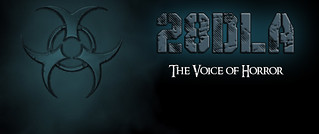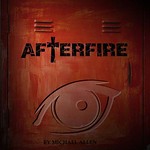*spoiler alert.
Director: Patrick Dinhut.
Writer: Frank H. Woodward.
Cast: Velizar Binev, Sarah Brown and Andy Clemence.
Very rarely will one of SyFy’s Saturday night products truly entertain. The tale developed in Black Forest is an ominous one. Also, this film stitches in a bit of Guillermo del Toro’s style as well. Both films like to have most of the action take place at night and include that doubtful deunouemont.
Also, writer Frank Woodward certainly knows his lore about faeries (not fairies) and expands on it. The difference is not just in the spelling, but also in what they represent. While most people associate the Fae with Celtic tradition, namely in the UK, they are also known far and wide to include the Germanic world. After Woodward’s work in the extras found in the “Masters of Horror” DVD releases, he demonstrates how much he has learned.
Even the production team shows how tuned they are to Woodward’s script. The forest is rich in colour. Instead of dry autumn hues, there are mushrooms everywhere! And to help set the mood for the casual viewer, the opening act nicely summarizes what’s to come: a midsummer night’s dream set in the Black Forest of Germany, located near Gutach. The Brothers Grimm’s works are also referenced, and the background music cues in.
Although the xylophone score gets very grating fast, it does establish the tone. As the team of tourists is cajoled into taking a trip to a stone mound, outside of town, what they experience next is no trip through wonderland.
Walter Anderson (Andy Clemence) has a reason in why he’s not telling his wife he wants a divorce. They are on vacation, and he feels that the timing is not right. The reasons why are gently explored and it comes full circle in this tale. They meet Saxon (Dhaffer L'Abidine) and two scientists on the quest of proving ley lines are real. Also travelling with them is Anderson’s nanny, Amber (Sapphire Elia); she’s there to take care of Bree, their seven-month-old baby.
In addition to all the symbolic elements nestled in this movie, this film delivers a number of fairy-tale elements and references in a very rapid order. From the magical golden fairy road to the mysterious cabin in the woods, the idea of being transported to another world is not lost upon the victims. They meet seven cannibalistic dwarves and have to chase down a rabid wolf. Despite all the over-saturated hints everywhere, Anderson is not willing to believe. And true to form, the movie’s central message is delivered.
Maybe, if the pagan culture was not displaced in favour for newer scientific beliefs, then the lost world of fantasy would not become so hostile. The suggestion that Enlightenment is flawed is certainly one that some may consider as the true horror since the coming of the Renaissance.
After all, just what would the world be like if Elves, Dwarves, Faeries and Elementals still walked the Earth? By believing that they do not exist anymore denies them existence. Even this film briefly mentions Sir Arthur Conan Doyle’s steadfast belief in the Cottingley Fairies.
This movie delivers a hauntingly beautiful parable because of the roles everyone plays. There is one daydream believer from the two scientific adventurers. From the Anderson family, Hans (i.e. Walter) has to change his tune of disbelief if he is to save those who he truly loves. His baby is kidnapped by faeries and his wife is put into a magical sleep by a needle.
The challenges that Anderson faces are classic. Cazmar (Ben Cross) is this movie’s answer to Oberon, and his rule cannot go unchallenged. He owns the Black Forest. Also, Cross’ performance is his best to date. He loves getting into the role, and to see how he can top that will be worth exploring. Some viewers may remember him as Barnabas in the excellent 90's remake of Dark Shadows. But in this film, the question of why an Irishman is in Germany really needs to be asked. One possible answer is to show that this story crosses all cultural boundaries. After all, that’s what this movie tries to do. It breaks down barriers and it does so successfully.
Overall: 7.5 out of 10.
For further reading:
Cottingley at Randi.org
| | |
Advertise Here - Contact me Michael Allen at 28DLA
Subscribe to 28 Days Later: An Analysis Email Subscription
Director: Patrick Dinhut.
Writer: Frank H. Woodward.
Cast: Velizar Binev, Sarah Brown and Andy Clemence.
Very rarely will one of SyFy’s Saturday night products truly entertain. The tale developed in Black Forest is an ominous one. Also, this film stitches in a bit of Guillermo del Toro’s style as well. Both films like to have most of the action take place at night and include that doubtful deunouemont.
Also, writer Frank Woodward certainly knows his lore about faeries (not fairies) and expands on it. The difference is not just in the spelling, but also in what they represent. While most people associate the Fae with Celtic tradition, namely in the UK, they are also known far and wide to include the Germanic world. After Woodward’s work in the extras found in the “Masters of Horror” DVD releases, he demonstrates how much he has learned.
Even the production team shows how tuned they are to Woodward’s script. The forest is rich in colour. Instead of dry autumn hues, there are mushrooms everywhere! And to help set the mood for the casual viewer, the opening act nicely summarizes what’s to come: a midsummer night’s dream set in the Black Forest of Germany, located near Gutach. The Brothers Grimm’s works are also referenced, and the background music cues in.
Although the xylophone score gets very grating fast, it does establish the tone. As the team of tourists is cajoled into taking a trip to a stone mound, outside of town, what they experience next is no trip through wonderland.
Walter Anderson (Andy Clemence) has a reason in why he’s not telling his wife he wants a divorce. They are on vacation, and he feels that the timing is not right. The reasons why are gently explored and it comes full circle in this tale. They meet Saxon (Dhaffer L'Abidine) and two scientists on the quest of proving ley lines are real. Also travelling with them is Anderson’s nanny, Amber (Sapphire Elia); she’s there to take care of Bree, their seven-month-old baby.
In addition to all the symbolic elements nestled in this movie, this film delivers a number of fairy-tale elements and references in a very rapid order. From the magical golden fairy road to the mysterious cabin in the woods, the idea of being transported to another world is not lost upon the victims. They meet seven cannibalistic dwarves and have to chase down a rabid wolf. Despite all the over-saturated hints everywhere, Anderson is not willing to believe. And true to form, the movie’s central message is delivered.
Maybe, if the pagan culture was not displaced in favour for newer scientific beliefs, then the lost world of fantasy would not become so hostile. The suggestion that Enlightenment is flawed is certainly one that some may consider as the true horror since the coming of the Renaissance.
After all, just what would the world be like if Elves, Dwarves, Faeries and Elementals still walked the Earth? By believing that they do not exist anymore denies them existence. Even this film briefly mentions Sir Arthur Conan Doyle’s steadfast belief in the Cottingley Fairies.
This movie delivers a hauntingly beautiful parable because of the roles everyone plays. There is one daydream believer from the two scientific adventurers. From the Anderson family, Hans (i.e. Walter) has to change his tune of disbelief if he is to save those who he truly loves. His baby is kidnapped by faeries and his wife is put into a magical sleep by a needle.
The challenges that Anderson faces are classic. Cazmar (Ben Cross) is this movie’s answer to Oberon, and his rule cannot go unchallenged. He owns the Black Forest. Also, Cross’ performance is his best to date. He loves getting into the role, and to see how he can top that will be worth exploring. Some viewers may remember him as Barnabas in the excellent 90's remake of Dark Shadows. But in this film, the question of why an Irishman is in Germany really needs to be asked. One possible answer is to show that this story crosses all cultural boundaries. After all, that’s what this movie tries to do. It breaks down barriers and it does so successfully.
Overall: 7.5 out of 10.
For further reading:
Cottingley at Randi.org
| | |
Advertise Here - Contact me Michael Allen at 28DLA
Subscribe to 28 Days Later: An Analysis Email Subscription


 Wednesday, March 07, 2012
Wednesday, March 07, 2012
 Edohotep
Edohotep




 Posted in:
Posted in: 


0 comments:
Post a Comment